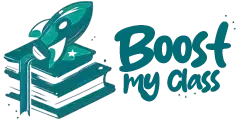Liberty ENGR 240: Grab 7 Days of Tutoring Help for Free!
$0.00
Why You Should Study Liberty ENGR 240
Enrolling in Liberty University’s ENGR 240 – Dynamics (16 wk) is like stepping into the world of motion and forces, and it’s an exciting journey for anyone passionate about engineering or physics.
150+ ![]()
Qualified Tutors
You may need help with:
- Liberty ENGR 270: 7 Free Days of Tutoring Help Just for You!
- Liberty ENGR 315: Get a Full Week of Class Support for FREE!
- Liberty ENGR 330: Why Wait? Your First Week of Elite Help is FREE
- Liberty ENGR 210: Grab 7 Days of Tutoring Help for Free!
- Liberty ENGR 133: Claim Your Free Week of Help Today!
- Liberty ENGR 115: Get a Full Week of Class Support for FREE!
This course takes you on a thrilling exploration of how objects move, interact, and respond to forces in our universe. Whether you’re already enrolled or considering it, you’re in for an adventure.
ENGR 240 is designed to make the seemingly complex topic of dynamics easy to grasp. It breaks down the fundamental principles into digestible pieces, ensuring that students of all backgrounds can understand and excel.
But what truly makes this course special is its real-world applications. You’ll dive into scenarios that engineers face daily, from analyzing the motion of vehicles to understanding the forces acting on structures. It’s hands-on learning that prepares you for the challenges of an engineering career.
From a career perspective, this course is a game-changer. The skills you gain in dynamics are invaluable, especially if you’re pursuing a career in fields like mechanical engineering, aerospace engineering, or even robotics.
In conclusion, Liberty’s ENGR 240 – Dynamics is your ticket to understanding the physics of motion and the forces that shape our world. It simplifies complex concepts, provides hands-on experience, and sets you on a path to a rewarding engineering career. Don’t miss the chance to embark on this dynamic journey!
150+ ![]()
Qualified Tutors
What Are The Career Benefits of Liberty ENGR 240
Liberty University’s ENGR 240 – Dynamics (16 wk) is not just a course; it’s a gateway to understanding the fundamental forces that shape our world. Whether you’re a current student or considering enrolling, here are the compelling benefits of taking this course, both from an educational and career standpoint.
First and foremost, ENGR 240 simplifies the complex world of dynamics. It takes the laws of motion and makes them accessible to students of all levels. You’ll gain a solid understanding of how objects move and interact with forces, laying a strong foundation for further studies.
What sets this course apart is its practicality. It doesn’t just stop at theory; it immerses you in real-world scenarios. You’ll analyze the motion of vehicles, study the forces acting on structures, and explore the dynamics of mechanical systems. These hands-on experiences provide invaluable insights for future engineering challenges.
From a career perspective, the benefits are substantial. Dynamics is a fundamental aspect of engineering, and the skills you acquire are in high demand across various industries. Whether you aspire to be a mechanical engineer, aerospace engineer, or even work in robotics, a solid grasp of dynamics opens doors to exciting career opportunities.
In conclusion, Liberty’s ENGR 240 – Dynamics offers a dynamic education that simplifies complex concepts, provides practical experience, and paves the way for a successful engineering career. Whether you’re passionate about understanding motion or seeking to enhance your employability, this course equips you with the knowledge and skills to thrive in the dynamic world of engineering. Embrace the opportunity to become a master of motion and forces!
150+ ![]()
Qualified Tutors
Why You Should Hire Us To Take Your Class?
If you’ve enrolled in “Liberty ENGR 240 – Dynamics (16 wk)” and find yourself facing challenges with assignments, tasks, or even the entire class, we’ve got your back. Here’s how our service can make your academic journey smoother:
Expert Tutors: We have a team of experienced tutors who specialize in dynamics. They’ll step in to manage your class on your behalf, ensuring that assignments and coursework are completed with excellence.
Regular Updates: You won’t be left in the dark. We’ll provide you with daily or weekly progress reports on your class. This way, you can relax while we handle your academic responsibilities.
Providing Logins: All you need to do is provide us with your login details. Once you’ve done that, our team will handle everything, from assignments to coursework. You can free up your time for other commitments and trust that your class is in capable hands.
Life can get busy, and we understand that. Our service is designed to ease your academic stress and ensure your success in ENGR 240. If you ever feel stuck or overwhelmed with assignments, don’t hesitate to reach out. Let us manage the challenges while you enjoy the benefits of this valuable course.
150+ ![]()
Qualified Tutors
Frequently Asked Questions
1) What is Liberty ENGR 240 – Dynamics (16 wk)?
ENGR 240 is a course that delves into the study of dynamics, focusing on the motion of objects and the forces that influence them. It’s designed to provide a comprehensive understanding of this fundamental aspect of physics and engineering.
2) Is this course suitable for students with limited physics or engineering backgrounds?
Absolutely. ENGR 240 caters to students of all levels and backgrounds. It breaks down complex dynamics concepts into digestible pieces, ensuring that everyone can grasp the fundamentals.
3) How does this course benefit students from a career perspective?
ENGR 240 equips students with essential skills in understanding motion and forces, which are critical in various engineering fields. Graduates are well-prepared for careers in mechanical engineering, aerospace engineering, and other areas where dynamics knowledge is crucial.
4) What kind of assignments and coursework can I expect in this course?
This course typically includes assignments and projects that involve analyzing the motion of objects and understanding how forces affect them. It offers hands-on experiences that enhance practical knowledge.
5) How can the service mentioned assist students struggling with this course?
If students find themselves struggling with assignments or the course in general, the service offers expert tutoring and assistance. Knowledgeable tutors will take over the class, manage assignments, and provide regular progress updates, allowing students to focus on other commitments while ensuring success in ENGR 240.

